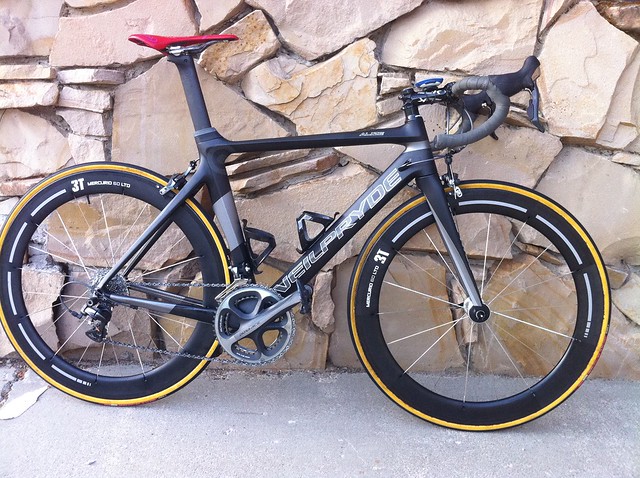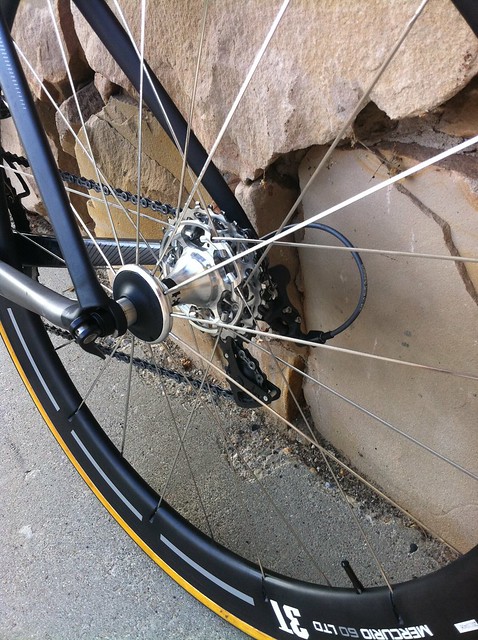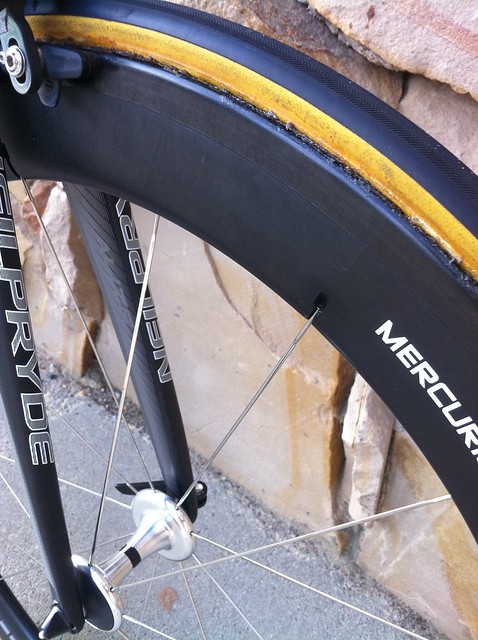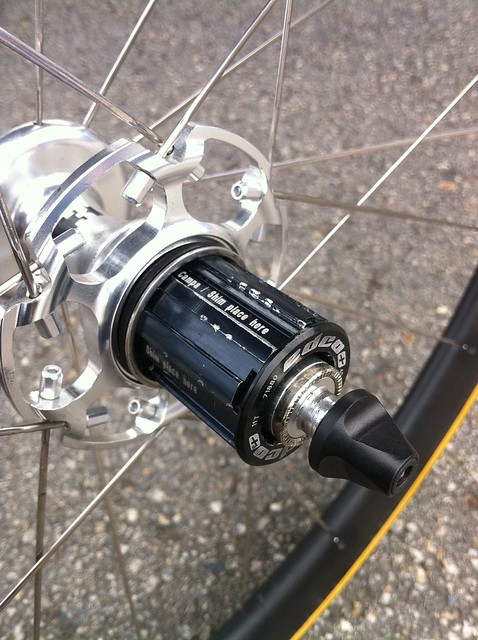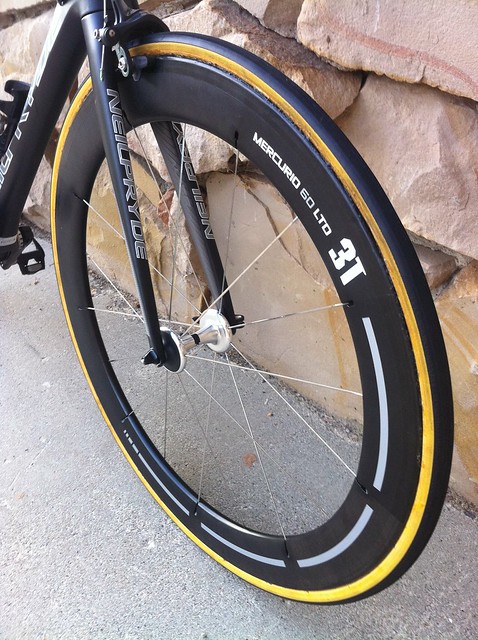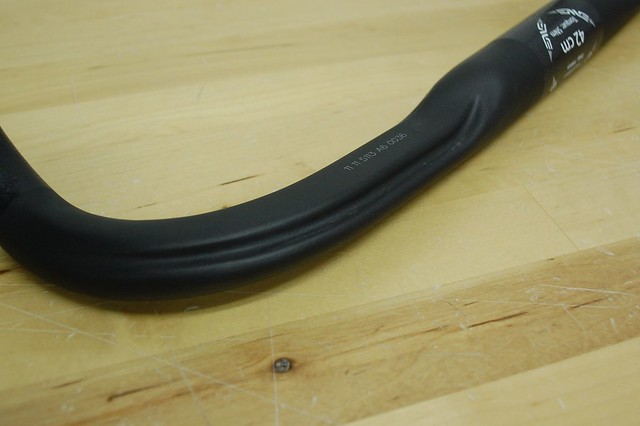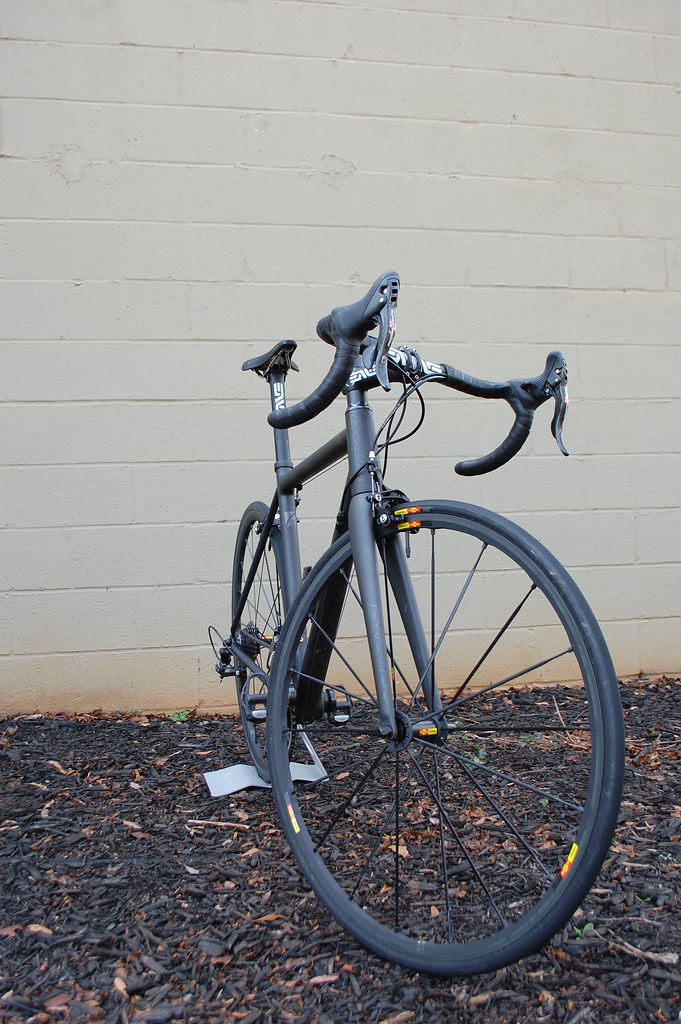By William LinkShimano's promise of "Revolutionary" shifting seemed like lofty marketing-speak until I had a chance to ride a bike this month fitted with a full Di2 groupset. I had the same gee whiz feeling the first time I drove a sports car with a dual clutch transmission. I am now a believer in the elusive perfect shift. The shifting is flawless each time with only a light press of the paddle located just behind the brake lever. One click equals one change in gear, just like the German Sports cars I have driven. Di2 is easy, accurate and you never miss a shift. My current reference is a compact 2011 Campagnolo Record groupset and I am a long time Shimano user for road and mountain bikes.
Rear derailleur shifting is good with Di2, but the front derailleur shifts are magical in how quick and precise it is. I could not make the system mis-shift no matter how hard I tried. Functionally, I found the ability to quickly downshift the chain-ring on the standard crank to be really useful, it is much quicker than Campy. At one stoplight on my regular training route after a long fast, downhill, I always remember after it is too late to downshift before starting up the following hill. With Di2 it is simple to be hard on the brakes and drop a few gears and/or the chain ring just prior to full stop. However, with Di2 the "one click equals one change" in gear is a departure from the past and with Campy you can even sweep the shifter to change five or six gears in one movement.
![]()
Another interesting feature for Di2 is the automatic trimming of the front derailleur, it knows the position of the rear at all times. It seems to me, that Shimano could program sequential shifting, meaning one shift from hard to easy gear per click utilizing front and rear derailleurs at the same time.
As for the ergonomics, the hoods seem narrow, my current Campagnolo shifter happens to feel more comfortable to me. I think hands to shifter preference is similar to saddle comfort to a lesser degree. Anyone moving from dura ace 7800 will feel at home. I found that these levers had better leverage for braking while in the hoods, something that Campy does not quite match. The 7800 brakes are really best of class in my opinion even running on carbon rims.
One think I keep thinking about is the fact that Di2 lacks an internal shifting mechanism in each hood. This could have freed Shimano to really re-think the hood into something really "revolutionary", but they were evidently concerned about keeping very close to the evolved 7900 shape for upgrade/migration path from current Dura-Ace. I wonder what prototypes are still on the shelf in the Engineering department in Japan.
The battery is the only thing that sticks out in the groupset. The set up I tested had the stock battery attached just below the water bottle cage on the down-tube. It is connected to a bracket that uses the same screws as the cage. This position makes sense, it has a low center of gravity and easy to access for charging without much downside other than aesthetics. A custom hidden battery in the seat tube sure sounds cool but would have all the disadvantiags to ease and geometry.
My final thoughts keep going back to the comparison in cars. Di2 is not an automatic transmission, it is manual gearing tweaked with electronic shifting. Porsche, Audi and BMW all now have options for dual clutch or manual gear boxes. I've owned cars with both types. I am a huge fan of the dual clutch as it offers some very tangible advantages but I always come back to a manual not for performance but enjoyment. I think Di2 has some big advantages over the current offerings. The quick shifting, ability to always be in the right gear is a huge thing and the possibility of shifting while braking hard is awesome. There is definitely less thinking which allows the rider to concentrate on the ride. While I still really like the connected mechanical feedback of the current Campy set-up; I'm sure I'll own an electronic groupset in the near future.






